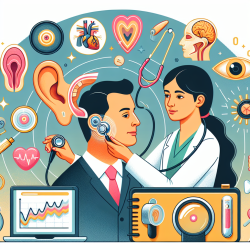Understanding Depression Trajectories in Adolescents
Adolescence is a critical developmental period marked by significant social, cognitive, and physiological changes. These changes can make adolescents vulnerable to mental health challenges, including depression. Recent research has highlighted the importance of understanding how depression manifests differently in autistic and neurotypical youth.
Key Findings from Recent Research
A study titled Trajectory of depressive symptoms over adolescence in autistic and neurotypical youth provides valuable insights into the depressive symptom trajectories in these populations. The study followed 244 youths, including 140 with autism spectrum disorder (ASD) and 104 typically developing (TD) peers, over four years.
The findings reveal that autistic youth experience elevated depressive symptoms earlier in adolescence compared to their TD peers. However, these symptoms tend to decrease as they reach middle adolescence, while TD youth show an increase in depressive symptoms during this period.
Implications for Practitioners
For practitioners working with autistic and neurotypical adolescents, these findings underscore the need for tailored interventions that consider the unique developmental trajectories of each group. Here are some practical steps practitioners can take:
- Early Intervention: Implement early screening and intervention strategies for depressive symptoms in autistic youth to address potential challenges before they escalate.
- Continuous Monitoring: Regularly assess depressive symptoms in both autistic and TD adolescents, especially during key developmental transitions such as puberty.
- Gender-Specific Approaches: Recognize that females in both groups may experience higher depressive symptoms and require gender-sensitive interventions.
- Holistic Support: Provide comprehensive support that includes social, emotional, and academic interventions to address the multifaceted nature of depression.
Encouraging Further Research
The study highlights the need for further research to explore the underlying mechanisms driving these divergent trajectories. Practitioners are encouraged to engage in or support research initiatives that delve deeper into the biopsychosocial factors influencing depression in autistic and TD adolescents.
By staying informed and integrating research findings into practice, practitioners can enhance their ability to support adolescents through these critical developmental stages, ultimately leading to better mental health outcomes.
To read the original research paper, please follow this link: Trajectory of depressive symptoms over adolescence in autistic and neurotypical youth.










